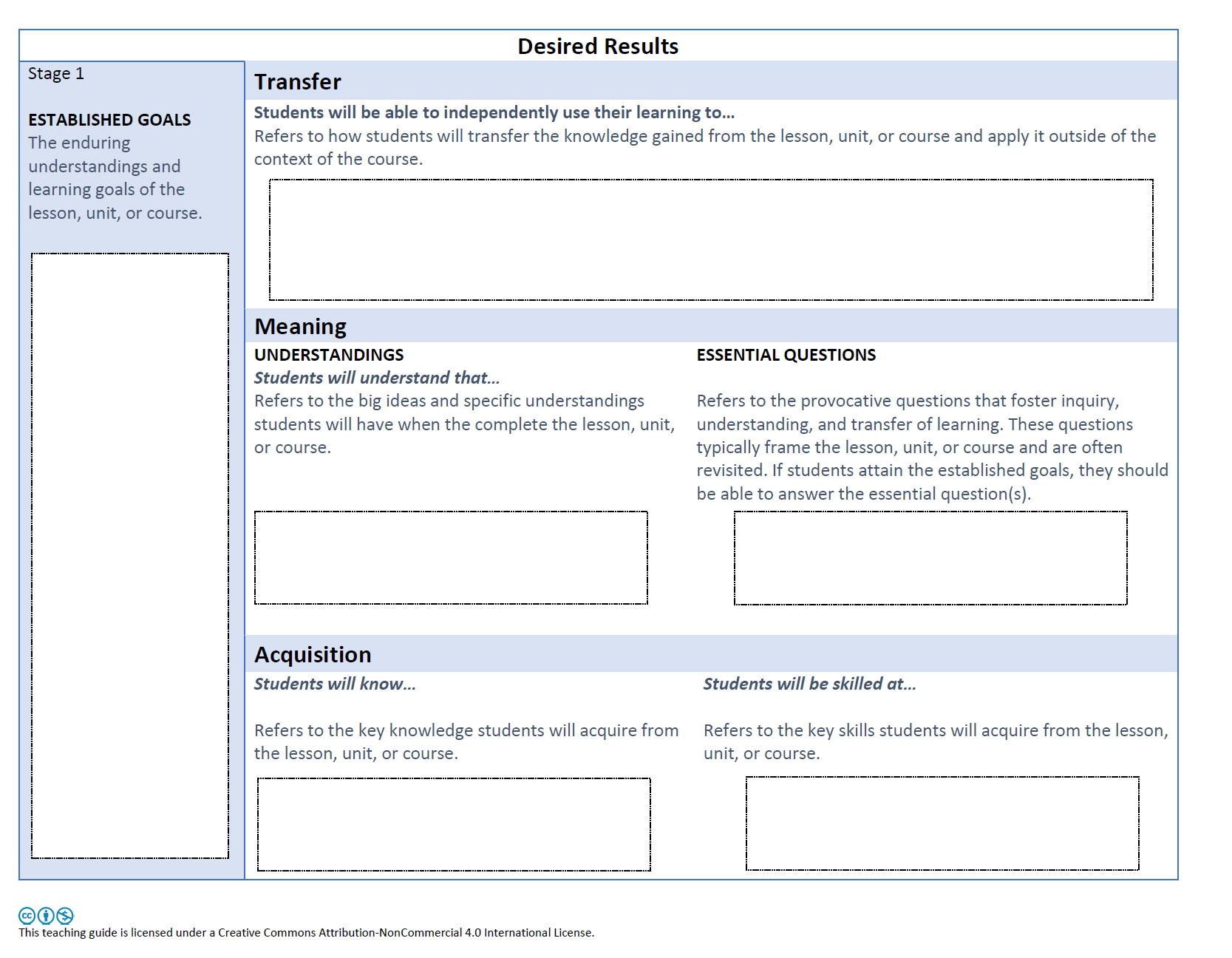Week Four
Understanding by Design
By using the UBD framework for curriculum planning and assessment design, ultimately you go back to the end goals of the unit or module. The process entails revisiting primary goals and reexamining the learning materials and activities you’re using to support the desired intent. Therefore, design or modify the course with the big idea in mind, what you want students to know, understand, and demonstrate the knowledge.
“Begin with the End in Mind”

3 Stages of UBD
UbD in Higher Education – Online Course Design:
Strengths
Limitations
Stage 1 – Identify Desired Results
The goals of Ubd are universally thought-provoking and exceedingly noble. Establishing goals and outcomes from the onset leads to well-considered changes after each successful attempt.
Stage 2 – Backward Design
After a consistent understanding of what the course goals are assessments are envisioned and rubrics and other helpful sharable measurement criteria are created.
Stage 3 – Plan Learning Experiences
The experiences and fieldwork are much easier to envision once the goals and assessments have been devised.
Stage 1 – Identify Desired Results
It can be very challenging (or more accurately, sometimes hopelessly beside the point) to challenge the use of existing resources, learning materials, and curricula a faculty member uses when they are not empowered to do so.
Stage 2 – Backward Design
As mentioned above, in many if not most cases the assessments and standards are fixed by higher-ups and not alterable or selectable for faculty as much as they’d like.
Stage 3 -Plan Learning Experiences
In terms of time and faculty attention, these can be very resource-heavy or encourage pie-in-the-sky projects and field trips that are not actually viable, doable, or within the institution’s budget.
Personal UbD Experience
I have used the UBD worksheet above to help convert in-person classes to online and found it to be a terrific starting point for a discussion with faculty on course re-design. UbD was instrumental in getting to more critical thinking about instructional goals, but more importantly, distracted them from technophobia (if present).
In other words, it was easier to discuss how to apply a technology tool within an LMS or attached to an online course when the reason was clear and aligned with stated goals from the onset, it allowed a conversation to start about not using technology for its own sake but as a method to truly deepen subject understanding.


WORKS CITED
GRAPHICS
- Math Instruction Using Backward Design by Paula Lombardi and Gail Poitrast is licensed under a Creative Commons Attribution-Noncommercial 4.0 International License.
2 –“Bowen, R. S.” by Understanding by Design. Vanderbilt University Center for Teaching is licensed under CC BY 4.0
3 –“Backward-Design-Template_EFP-1” by Elaine Farrally-Plourde is licensed under CC BY 4.0

